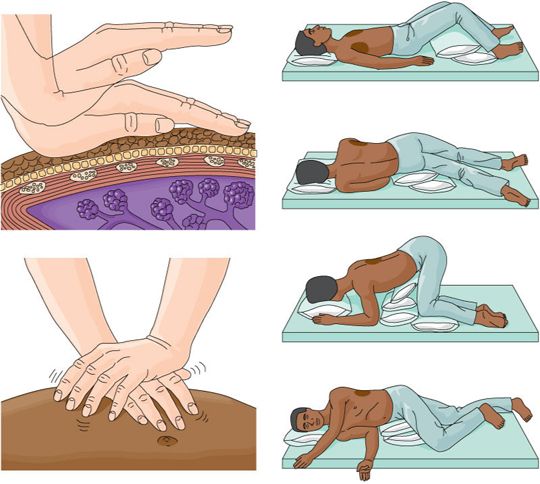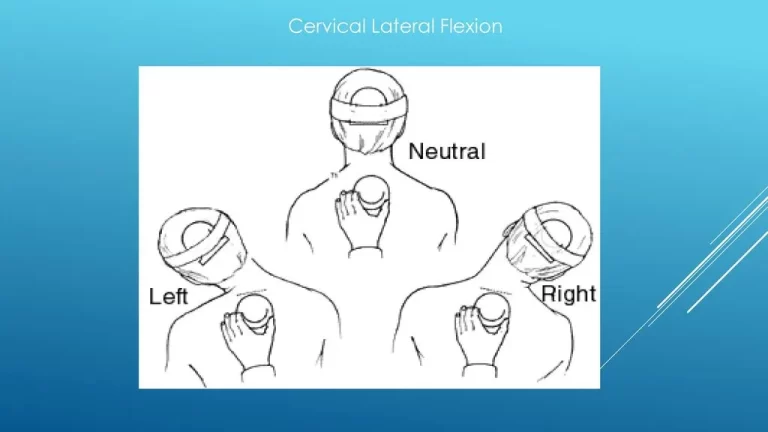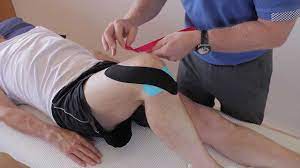Postural drainage: Procedure, Indications, Contraindication
Table of Contents
What is postural drainage?
Postural drainage is a way to help treat breathing problems due to swelling and too much mucus in the airway bronchus of the lungs. Postural drainage is the positioning of a patient with an elaborate lung segment such that gravity has an extreme effect of loosening the drainage of broncho-pulmonary secretions from the tracheobronchial tree.
It depends on the concept of gravity-assisted mobilization of mucus and the way it is removed. It is also part of chest physiotherapy treatment with postural drainage.
What are the mechanism of postural drainage
During vertical position, only the segments of the right upper lobe and a non-singular portion of the left upper lobe receive gravitational force whereas the segment of the middle, verbal of left upper lobe, and lower lobe segments of both lungs must drain anti-gravity. In the normal healthy lobe, the mucociliary muscle clears the bronchial secretions.
In an unhealthy lobe, they get to meet each other, and secretions get accumulated especially in the smaller airways that cannot be evacuated without gravity position which can further lead to inflammation and scarring. The natural methods of evacuating the tracheobronchial tree of the cumulus of mucus are on the whole extremely empty. mucociliary muscle action removes dust or bacteria and is not sufficient when there is much mucus
Scheduling of treatment
The treatment protocol should be in the early morning because secretion builds up during the night. treatment can be done at night to minimalize coughing during sleep. you have to start treatment at least 1-2 hours after eating. This minimizes nausea and vomiting. don’t do CPT before meals because it will cause tiredness and appetite
What are the procedure of postural drainage
The patient is curving or strengthening at an angle adjust and chest percussion is managed to loosen the secretions of the bronchial wall. Frames, curved tables, and pillows may be used to support patients in these positions. Some clinics’ postural beds have a turn in the middle. In a common aspect, the upper lobe state has the benefit of gravity drainage both in upright as well as in horizontal positions, so postural drainage can be applied in sitting or lying posture. The middle and lower lobes do not have the supremacy of gravity drainage in upright, horizontal, or supine postures.
- Use specific positions so the strength of the gravity can assist in the removal of mucus from affected lung segments to central airways utilizing coughing and suctioning.
- The patient is positioned so that the diseased area is in a near upright position, and gravity is used to assist the drainage of a particular segment.
- The positions assumed are determined by the location, severity, and duration of the secretion deterrent.
- The exercises are performed three to four times a day, before meals and bedtime. Each position is done for 4-10 minutes.
- The procedure should be stopped if tachycardia, dyspnea, or chest tightness occurs. These symptoms may show hypoxemia. stop if hemoptysis occurs.
- Bronchodilators, mucolytics agents, water, or saline may be dispensed and drink before postural drainage and chest percussion to decrease bronchospasm, decrease the thickness of mucus and sputum, and conflict edema of the bronchial walls, and enhance secretion removal.
- before eating Perform mucus removal procedures.
- Make sure the patient is relaxed before the procedure starts and as comfortable as possible he or she assumes each position.
- Auscultate the chest to decide the areas of needed drainage.
- Ask the patient to deep breathe and cough after spending a particular time in each position.
- Ask the patient for diaphragmatic breathing throughout postural drainage: this helps widen airways so secretions to be drained.
General guidelines of postural drainage
- each position maintained for 5 to15 minute postural drainages can be done on the bed or floor
- to allow mucus to drain your chest should be much lower than your chest
- use a pillow, foam wedge other parameters done for postural drainage
- during the procedure of postural drainage breath to the nose and out to mouth
- do postural drainage at morning to clear mucus that builds overnight
- respiratory doctor, a nurse will be recommended for postural drainage
- Do not have any type of trouble throughout treatment postural drainage
In ICU patients, including those on mechanical ventilation, Postural Drainage should be performed from every 4 to every 6 hours as mentioned. PDT should be applied at least every 24 hours based on assessments from person to person treatments. devoted patients should be reevaluated every 3 months and with the change of status. In the actively participating patient, postural drainage can be accompanied by thoracic expansion exercises and by breathing control
Need and assessment of postural drainage
- A fresh radiograph and bronchogram are available
- if possible affected area should be isolated
- pulmonary function test necessary
- massive mucus production
- history of cystic fibrosis, lung abscess other lung disorders abnormal vital signs decline arterial blood gas value oxygen saturation value
- mucus plugging, infiltrates, atelectasis seen in chest x-ray
- decrease or abnormal breath sounds like crackles are seen in the bronchial airway
What are the complication of postural drainage?
- breathlessness
- blood in mucus
- change in skin color
- severe pain in the airway
- if patient has headache,palpitation, fatigue
- if patient vital capacity decrease TV and FRC volume
- nausea and craving of
Positions
Upper Lobe
Apical drainage position: The patient should be in a supine position with a slight tilt on the bed to the position of the lesion which may be involved leaning slightly backward and forward. The position is usually only compulsory for infants or patients being in a flat position, but sometimes maybe compulsory if there is an abscess or stenosis in the bronchus in the apical region
Anterior drainage position: The patient should be lying in an upright position on the back with a hand should be relaxed position and knee should be flex and the pillow position should be between the knee
posterior drainage position:
- on the right side: The patient should lie on his left side and then turn on to his face, comfortable with a pillow with another helping his head. He should place his left arm comfortably backward of his back with his right arm placed on the supporting pillow the right knee should be flexed
- on the left side: The patient should lie on his right side turned on to his face with three pillows prepare to raise the shoulder 30cm from the bed. He should place his right arm backward on his back with his left arm resting on the supporting pillows; both the knees should be slightly bent.
Middle lobe
Lateral side:medial side patient lie on his back his body part turned to the left supported by pillow under right side shoulder up-to hip relaxed by his side foot should be raised up to 25 cm up from surface.chest maintain angel 20
Lingula lobe
the conjunction of the superior segment and inferior segment of the lobe is called the lingula lobe the patient should lie on his body part turned right supported pillow behind left side shoulder to hip arms in a relaxed manner foot position 30 cm upward toward selling .chest position should be 20 degrees of angle.
Lower lobe
APICAL component – The patient should lie prone with the head rotated to one side, his arms relaxed in a sheltered position close together to the head, and a pillow under his hips.
ANTERIOR BASAL component – The patient should lie supine position on his back with the buttocks resting on a pillow and the knees flexed position the foot surface of the bed should be raised 40cm toward selling. The chest position should be 20 angle degree
POSTERIOR BASAL component – The patient should lie prone with his head tilted to on this site, his arms in a sheltered position by the side of the head, and a pillow below his hips. The bed should be upward 42cm toward selling. the chest should be at an angle of 20°degree
CARDIAC component – The patient should lie on his right side with a pillow below the hips and the foot of the bed should be upward 43cm from the surface. The chest position should be a 25-degree angle.
Lateral component – The patient should lie on the converse side with a pillow below the hips and the bed should be raised 42cm from the surface. The chest is lean at 18 degree of angle
What are the indication of postural drainage?
- difficulty to clear mucus from the bronchial airway
- mucus production foamed more than 20 to 30 ml/per day
- mucus presence in arterial wall
- mucus plugging because of atelectasis which is investigated by chest x-ray
- A cavity formed by such lung condition such as cystic fibrosis, Chronic Obstructive Pulmonary Disease (COPD), emphysema
- Any foreign suspected in bronchial airway
- patient in ventilator position
- weak respiratory muscle
- A person can not remove secretion voluntary
- Thick and viscous sputum production on bottom of the lung
Contraindication:
- Not for infants in NICU admitted because more apparatus attached to the patient
- with severe head injury infraction of the brain, CVA condition
- patient with severe blood pressure
- patient with abnormal vital capacity
- esophagectomy there can be extreme stress on the anastomosis and fall may cause hypoxemia
- pulmonary edema may collect another surface than after applying postural drainage in the area may worsen situation
- patient with orthopnea condition
- is more than 21mm/hg
- patient with any rib fracture around chest area
- patient having fresh spinal cord lesion
- any skin infection, open wound, burns in chest area
- fresh skin grafting or flaps around chest
- patient with a diagnosis of fail chest
- patient having any type of eye operation like cataract
- ages children who don’t hold the position for a prolonged period.







5 Comments